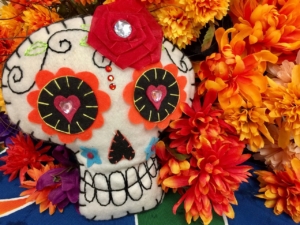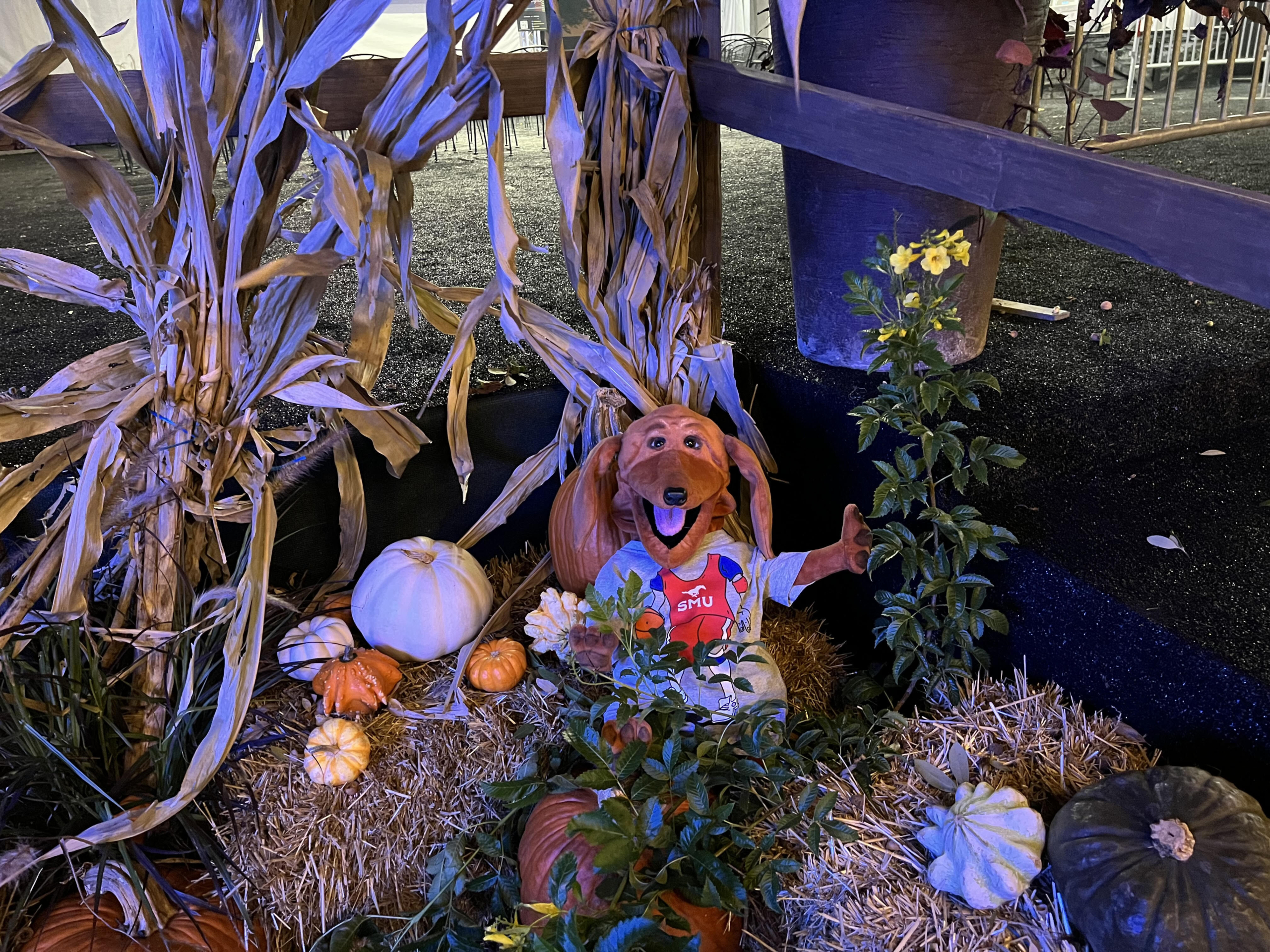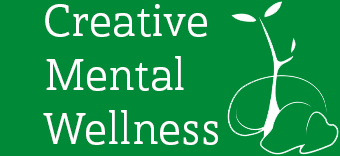November 2023 Newsletter
Updates!
Website debut and Mental Health Resources Fair
We are so excited this month to debut our new website! A wonderful team of volunteers has been working hard and are prepared to debut the official Creative Mental Wellness website. Our website will be used to provide further updates on our organization, the Mental Health Resources Fair, and all things DAISY. You can visit the website here or by going to www.creative-mental-wellness.com. We are moving forward with the Mental Health Resources Fair so that attendees can learn about local, state, and national mental health resources. This event will be held in Houston on January 13th, 2024. Save the date!

Día de los Muertos (Day of the Dead)
How Celebrating Dia de los Muertos Can Heal
Día de los Muertos–or Day of the Dead–is a Mexican holiday that is celebrated on November 1st and 2nd. A time to honor and remember loved ones who have passed away, the holiday is a celebration of life AND death. It is believed that the spirits of the dead return to the world of the living to be with their families and friends.

The significance of the day lies in the belief that the dead would be insulted by mourning or sadness; instead, it is a time of celebration and joy. Families build altars or ofrendas in their homes and decorate them with flowers, candles, photographs, and other items that the deceased enjoyed in life. The altars are meant to welcome the spirits of the dead back to the world of the living and to show them that they are still loved and remembered.
One of the most significant items used in the decoration of the altars is marigolds. These bright orange flowers are believed to guide the spirits of the dead to the altar. Marigolds are also used to create a path from the cemetery to the altar, so the spirits can find their way home. The strong scent of the marigolds is said to help the spirits find their way back to the world of the living.

The holiday is celebrated with music, food, and parades. People dress up in costumes and paint their faces to look like skulls. The most famous symbol of the holiday is the sugar skull, which is a skull-shaped candy that is decorated with bright colors and patterns. Sugar skulls are often placed on the altars as an offering to the spirits of the dead.
Celebrating Day of the Dead can be a healing experience as it provides an opportunity to remember and honor loved ones who have passed away. In addition, this special day of remembrance reminds us that death is a natural part of life and that our loved ones are always with us in spirit. It is a time to celebrate their lives and to reflect on the memories that we shared with them. This can help us to feel more connected to our loved ones and to find comfort in the knowledge that they are still with us in spirit.The holiday is a reminder .
According to an article by The Healthy, Day of the Dead traditions support the idea that our relationship with the deceased isn’t over; it’s simply changing. Grief experts say that having a continued relationship can be healing. The article suggests looking for ways to continue the relationship with our loved ones that are comfortable for us.
In addition, an article by Psychology Today suggests that after-death communication experiences may even promote healing. These experiences may provide healing from deep trauma unmatched by traditional forms of grief work, or they may be soothing in experiences of less intense grief.
Participating in Day of the Dead celebrations can also be a positive impact on our mental health. It is a time to come together with family and friends and to celebrate life in a shared experience.. This can help us to feel more connected to our community and to find comfort in the knowledge that we are not alone in our grief.
The Power of Volunteering
Volunteering is the act of giving one’s time, skills, and energy to help others without expecting anything in return. It is a noble and rewarding way of contributing to the well-being of society and making a positive difference in the world. But volunteering is not only beneficial for the people and causes that receive the help; it is also immensely valuable for the person who volunteers.
While the term sounds very “other-focused,” service to others actually enhances many aspects of a person’s life. Volunteering helps the person who volunteers by providing opportunities to develop new skills, gain experience, enhance resumes, and advance careers. For example, by volunteering in a hospital, one can learn about medical procedures, patient care, and health administration. By volunteering in a school, one can improve their teaching, communication, and leadership skills. When volunteering for a nonprofit organization, one can gain insight into social issues, fundraising, and project management. These skills and experiences can be useful for personal and professional growth as well as opening up new opportunities in the future. As a side benefit, volunteering provides the volunteer with an opportunity to create relationships that can potentially aid the person professionally.
Improving mental and physical health is another positive outcome of volunteering. Volunteering can reduce stress, combat depression, keep the mind stimulated, and provide a sense of purpose. Research shows volunteering can stimulate the release of endorphins, the natural feel-good hormones, in the brain and creates a “helper’s high” that boosts the mood and self-esteem of the volunteer. Volunteering can also foster social connections, which are key for increasing happiness and well-being. By meeting new people, making friends, and building networks, the volunteer can feel less lonely and isolated and more supported and valued. If a person tends to lead a rather sedentary lifestyle, volunteering can help increase physical activity, which can improve the cardiovascular, immune, and nervous systems. By staying active and engaged, the volunteer can prevent or delay cognitive decline, lower the risk of chronic diseases, and increase their lifespan.
Enabling a person to find meaning and fulfillment in their life is yet another benefit of being a helper. The volunteer can discover their passions, interests, and values and align them with a cause that matters to them. By choosing a volunteer role that matches their personality, skills, and goals, the volunteer can feel more motivated and satisfied with their work. Volunteering can also help the volunteer to make a positive impact on the world and leave a lasting legacy. By seeing the results of their efforts, the volunteer can feel proud and accomplished and know that they have made a difference in someone’s life or in a community.
Another possible way service to others benefits the volunteer is a financial one. Volunteering for events–like the Super Bowl or a concert–affords those who might not have it in their budget to attend the event (as a paying patron) the opportunity to get to have the experience.
There are many different types of volunteering roles available for anyone who wants to help others and themselves. Some of the most common and popular volunteering roles are:
- Tutoring or mentoring children or adults who need academic, personal, or professional guidance.
- Providing companionship or assistance to seniors, people with disabilities, or people who are ill or isolated.
- Serving food, clothing, or shelter to people who are homeless, hungry, or in need.
- Advocating or raising awareness for a social, environmental, or political cause that one cares about.
- Cleaning, restoring, or conserving a natural or historical site that one values.
- Fundraising or donating money, goods, or services to a nonprofit organization that one supports.
- Organizing or participating in a community event, such as a festival, a parade, or a sports game, that brings people together and celebrates diversity and culture.
- Ushering at a local venue for performing arts.
These are just some examples of the powerful and transformative way volunteering can make a difference. There are many more opportunities and options available for anyone who wants to get involved and give back. The most important thing is to find a volunteer role that suits one’s interests, abilities, and availability and that makes one happy and fulfilled. You can look for local organizations and events to volunteer at, or use websites like Volunteer Match to help you find the right opportunities.
Volunteer Spotlight
One of the volunteers at Creative Mental Wellness volunteers at her local wild animal rescue center. She loves animals and likes supporting this organization. It is very rewarding for her because she gets to support the organization, while interacting with cute critters, like these raccoons!

Resilience and Management
The most pragmatic approach for dealing with mental health challenges
Resilience and management are two important goals for people dealing with mental illness. Resilience refers to the ability to adapt to difficult situations and cope with stress, adversity, or trauma. Building resilience can help protect individuals from various mental health conditions such as depression and anxiety. It can also help offset factors that increase the risk of mental health conditions, such as being bullied or previous trauma.¹
Management, on the other hand, refers to the ability to manage symptoms of mental illness and improve overall quality of life. Management strategies may include medication, therapy, self-care, and support from family and friends.²
Tactics for building resilience are actually similar to those utilized for managing symptoms associated with mental health challenges/mental illness. To build resilience–as well as manage symptoms associated with mental health challenges–individuals can take several steps, such as:
- CONNECTING with others
- VOLUNTEERING
- Practicing self-care activities, such as meditation or exercise1
- GOING OUTDOORS is another easy-ish, inexpensive way to increase resilience; fresh air and sunshine as well as the natural beauty of the outdoors is an important “tool” in our work for mental health management.
- To manage symptoms of mental illness, people can obtain help from a healthcare provider to develop a treatment plan that works best for them.²
It’s important to note that building resilience and managing symptoms of mental illness is a process that takes time and effort. It’s also important to seek support from family and friends when needed (if possible).
Having grace with yourself is the best approach. Just acknowledging you’re struggling is tough to do. And unfortunately, there’s no antidote for mental health challenges nor cure for mental illness. Taking each day–you know the cliche of “one day at a time”–really IS the best “advice.” Dealing with life’s challenges is not easy…which is why it’s so important to be kind and respectful but accountable to yourself. (And in conjunction with CONNECTION–”commiserating” with others who are challenged with similar issues CAN be helpful. You can support one another in dealing with obstacles. That’s called a SUPPORT GROUP, right????😉)
For people dealing with mental health challenges/mental illness, setting resilience and management as goals can be effective. Building resilience can help protect individuals from various mental health conditions while management strategies can help improve overall quality of life. By working together with healthcare providers and loved ones, individuals can build resilience and manage symptoms of mental illness effectively.
DAISY Practices
spending time outdoors
DAISY spent time at a pumpkin patch to breathe fresh air, enjoy a walk, and chat with her friend Seanda. This fall, see if you can find local pumpkin patches with pumpkins of all shapes, sizes, and colors.

Thank you for joining us on this mental health journey! Follow us Instagram, Facebook or LinkedIn to stay up to date.
Your friend,




